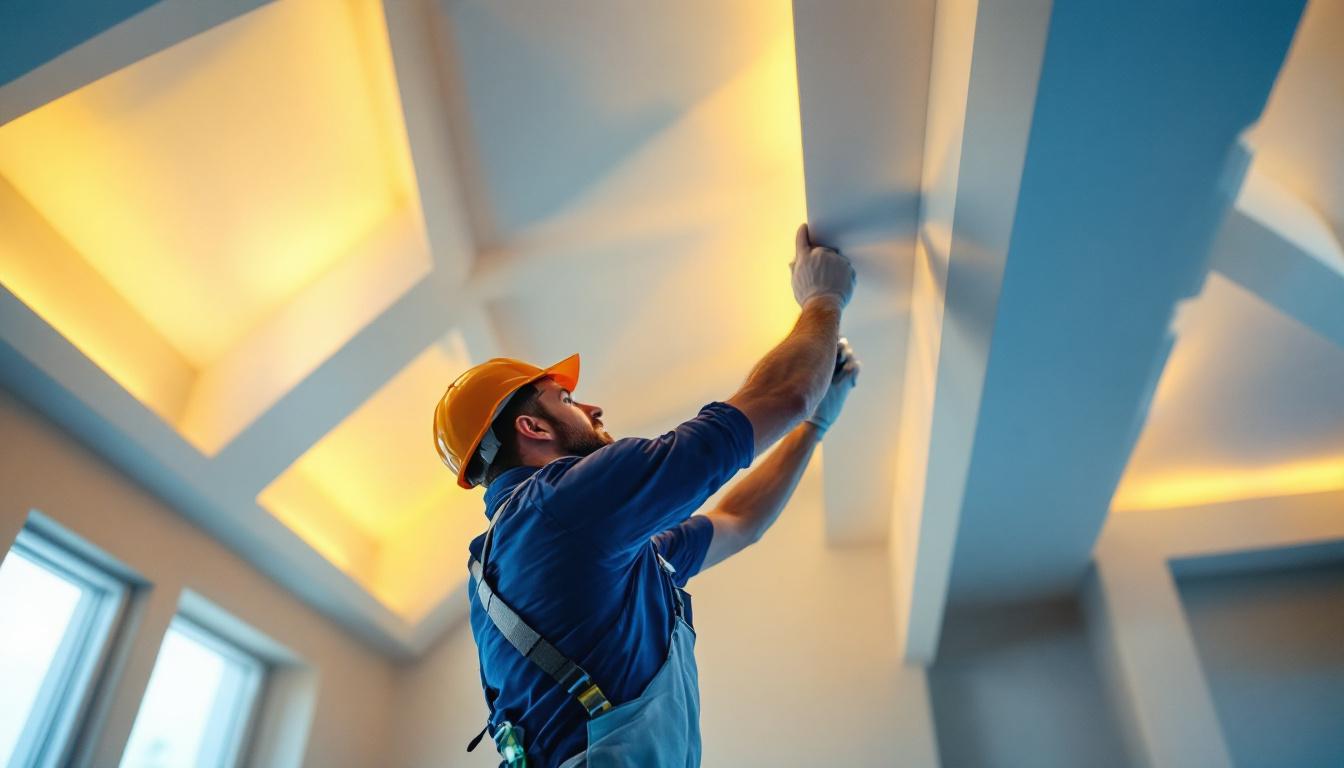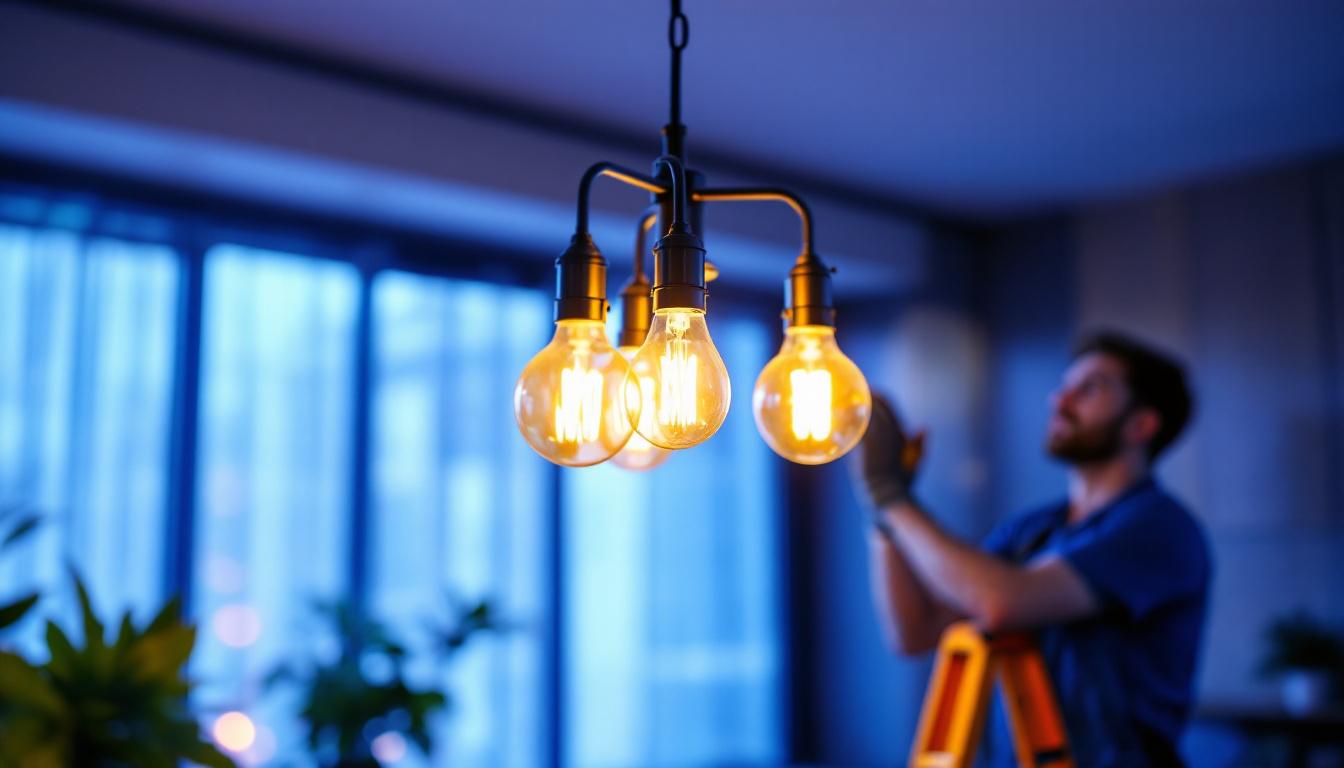
In the modern workspace, lighting plays a pivotal role in enhancing productivity, aesthetics, and energy efficiency. As lighting contractors, understanding the nuances of LED office lights, especially those designed for ceiling installations, is essential. This article delves into the various aspects of LED ceiling lights, providing insights that can simplify the selection and installation process for contractors.
The transition from traditional lighting solutions to LED technology has been significant in recent years. LEDs offer numerous advantages, including longer lifespans, lower energy consumption, and reduced heat output. For lighting contractors, this shift not only means a change in product offerings but also a need to educate clients on the benefits of LED lighting.
Moreover, the versatility of LED lights allows for a range of applications in office environments, from general illumination to task lighting. Understanding these applications can help contractors recommend the best solutions tailored to specific client needs. For instance, in collaborative spaces, adjustable LED fixtures can provide focused lighting for group activities while also allowing for ambient lighting when the space is used for relaxation or informal meetings.
LED ceiling lights come with a myriad of benefits that make them an attractive choice for office spaces. One of the most significant advantages is energy efficiency. LED lights consume significantly less power than their incandescent or fluorescent counterparts, leading to reduced electricity bills for businesses.
Additionally, the longevity of LED lights means less frequent replacements, which can save both time and money for contractors and clients alike. With a lifespan that can exceed 25,000 hours, LEDs are a reliable choice for any office setting. Furthermore, the low heat output of LED lights not only contributes to energy savings but also helps maintain a comfortable working environment, reducing the load on air conditioning systems during warmer months. This aspect is particularly beneficial in open-plan offices where temperature control can be a challenge, allowing for a more pleasant atmosphere conducive to productivity.
Another noteworthy benefit of LED ceiling lights is their ability to provide high-quality illumination without flickering or harsh glare, which can lead to eye strain and fatigue. Many modern LED fixtures also come with adjustable color temperatures, enabling users to customize the lighting to suit different tasks or times of day. For example, cooler, bluish light can enhance focus and alertness during morning hours, while warmer tones can create a more relaxed ambiance as the day winds down. This adaptability not only meets the diverse needs of various work activities but also contributes to the overall well-being of employees, promoting a healthier work-life balance.
When it comes to LED ceiling lights, there is a diverse range of options available. Each type serves different purposes and can be selected based on the specific requirements of an office space. Understanding these types can empower contractors to make informed choices for their clients.
LED panel lights are increasingly popular in modern office designs. These fixtures provide a sleek, minimalistic look while delivering uniform light distribution. They are particularly effective in drop ceilings, making them ideal for commercial spaces.
Panel lights are available in various sizes and color temperatures, allowing contractors to customize the lighting to suit the mood and functionality of the office. Additionally, their low-profile design makes them an excellent choice for spaces with low ceiling heights. Beyond aesthetics, many panel lights are designed with energy efficiency in mind, often boasting long lifespans and reduced energy consumption compared to traditional fluorescent lights. This not only contributes to lower utility bills but also aligns with sustainability goals that many businesses are striving to achieve.
Recessed LED lights offer a clean and unobtrusive lighting solution. Installed into the ceiling, these fixtures create a streamlined appearance while providing focused illumination. They work well in both open office layouts and individual workspaces.
One of the key advantages of recessed lights is their ability to minimize glare, which can enhance comfort and productivity for employees. Contractors should consider the beam angle and lumen output when selecting recessed lights to ensure they meet the specific lighting needs of the space. Moreover, recessed lights can be equipped with dimmers, allowing for adjustable brightness levels that can adapt to different tasks throughout the day. This flexibility can be particularly beneficial in multi-purpose areas where the lighting requirements may change based on the time of day or the nature of the work being performed.
For offices that do not have the infrastructure for recessed lighting, surface-mounted LED lights present an excellent alternative. These fixtures can be installed directly onto the ceiling, offering flexibility in placement and design.
Surface-mounted lights come in various shapes and sizes, making them suitable for a wide range of applications. They can also be used to create unique lighting designs that enhance the overall aesthetic of the office environment. In addition to their versatility, many surface-mounted lights feature advanced technology such as smart controls and motion sensors, which can further optimize energy use and enhance user experience. By integrating these features, offices can not only improve their lighting quality but also contribute to a more efficient and responsive workplace that adapts to the needs of its occupants.
Proper installation of LED ceiling lights is crucial for maximizing their performance and longevity. Lighting contractors must consider various factors during the installation process to ensure optimal results.
Before installation, it is essential to assess the electrical requirements of the chosen LED fixtures. Contractors should verify that the existing wiring can support the new lights, particularly if upgrading from older technologies. This may involve checking voltage ratings and ensuring compatibility with dimmer switches, if applicable.
Additionally, understanding the power consumption of the new LED lights can help contractors provide accurate estimates for energy savings to clients, further emphasizing the benefits of the upgrade.
The placement of LED ceiling lights significantly impacts the quality of illumination in an office space. Contractors should consider factors such as room size, ceiling height, and the intended use of the space when determining the layout.
For instance, in open office environments, a grid layout may be effective for even light distribution, while individual workspaces may benefit from task lighting solutions. Utilizing lighting design software can assist contractors in visualizing the layout and ensuring optimal coverage.
As businesses increasingly prioritize sustainability, the energy efficiency of LED lighting becomes a selling point for contractors. Educating clients about the environmental benefits of LED technology can help in closing sales and fostering long-term relationships.
Switching to LED lighting can significantly reduce a company’s carbon footprint. LEDs consume less energy, which translates to lower greenhouse gas emissions from power plants. For contractors, presenting this information can resonate with clients who are environmentally conscious.
Additionally, many regions offer incentives for businesses that invest in energy-efficient lighting solutions. Contractors should stay informed about available rebates and tax credits, as these can further incentivize clients to make the switch to LED technology.
Another trend in office lighting is the integration of smart technology. Many LED ceiling lights are now compatible with smart systems, allowing for enhanced control over lighting conditions. This can include features such as remote dimming, scheduling, and even automated adjustments based on occupancy.
Contractors should familiarize themselves with the various smart lighting options available and how they can be integrated into existing systems. This knowledge not only enhances the value offered to clients but also positions contractors as forward-thinking professionals in the industry.
While LED lights are known for their longevity, proper maintenance is still essential to ensure optimal performance. Contractors should educate clients on the best practices for maintaining their LED ceiling lights.
Dust and debris can accumulate on LED fixtures, diminishing their brightness and efficiency. Regular cleaning of the lights and surrounding areas can help maintain their performance. Contractors can recommend appropriate cleaning methods and products to ensure the longevity of the fixtures.
In addition to cleaning, it is advisable to periodically check for any signs of wear or malfunction. Early detection of issues can prevent more significant problems down the line, ensuring that the lighting remains effective and reliable.
As technology continues to evolve, lighting contractors should stay informed about the latest advancements in LED lighting. This includes new products, improved energy efficiency ratings, and innovative features that can enhance the functionality of office lighting.
Encouraging clients to consider upgrades as new technologies become available can lead to better performance and increased satisfaction. Contractors who position themselves as knowledgeable about the latest trends will likely build stronger client relationships and repeat business.
In summary, LED ceiling lights present a wealth of opportunities for lighting contractors looking to enhance their offerings. By understanding the various types of LED lights, installation considerations, energy efficiency benefits, and maintenance practices, contractors can simplify the process for their clients.
As the demand for energy-efficient and sustainable lighting solutions continues to grow, contractors who embrace LED technology will find themselves at the forefront of the industry. By providing valuable insights and expertise, they can not only meet client needs but also contribute to a more sustainable future.
Ready to elevate your lighting projects with the highest quality LED office lights? Look no further than LumenWholesale, where we specialize in providing contractors with spec-grade lighting products at unbeatable wholesale prices. Say goodbye to local distributor markups and hello to a vast selection of reliable, high-performance lighting that meets the strictest industry standards. Plus, with free shipping on bulk orders, you can enjoy premium lighting solutions at the best value — all without hidden fees or compromises. Don’t miss out on the perfect blend of quality, affordability, and convenience. Visit LumenWholesale now and discover the difference that true wholesale value can make for your next project.

Discover the essential insights into recessed LED fixtures with answers to lighting contractors’ most common questions.

Discover how cable grippers can enhance efficiency and profitability for lighting contractors.

Discover how can lights are revolutionizing lighting solutions for vaulted ceilings, offering contractors innovative ways to enhance aesthetics and functionality.

Discover how lighting contractors can enhance their projects and boost client satisfaction with the versatile 4 bulb light fixture.